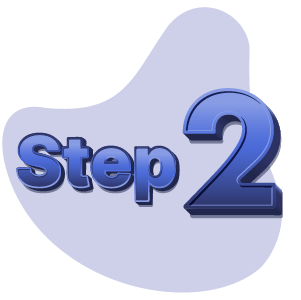What is Crypto Gambling?
Crypto gambling involves using digital coins to wager online. So, rather than fiat money like USD, EUR, or GBP, you use BTC, ETH, USDT, DOGE, and other coins. Cryptocurrency gambling encompasses sports betting and casino gaming. However, in this guide, we’ll be focusing on gambling at crypto casino sites.
Today, there’s a large number of crypto casinos that allow players to use digital coins. If you join these platforms, you can fund your account using Bitcoin and other cryptocurrencies. Likewise, when you win, you can withdraw real money to your crypto wallet.
Players choose crypto gambling platforms over conventional casinos for many reasons. Indeed, our analysis shows that there are notable advantages to using digital coins for gambling over fiat money. We’ll explain that later on, but first, let’s go into more detail on how crypto casinos function.
How Does Cryptocurrency Casinos Work?
The difference is primarily the currency system involved. On the surface, cryptocurrency casinos don’t function much differently from regular gaming sites. You sign up, deposit, stake, play games, and withdraw at both.
The fact that cryptocurrencies are digital makes some things a little different. For instance, you need a wallet address to deposit on crypto gaming platforms. But at fiat casinos, you use traditional channels like bank transfer, credit/debit cards, and eWallets.
To further illustrate how cryptocurrency casinos work, check out the sub-sections below:

From first-hand experience, we can say that crypto casinos have straightforward registration processes. You usually don’t have to provide many details to create your account. Most sites only demand you enter your email address (or phone number) and create a password. Afterward, you accept the terms and conditions, and that’s all. Furthermore, crypto casinos support registration via third-party platforms. This isn’t uncommon, as fiat gaming sites also allow users to sign up via the likes of Google and Facebook. However, at casinos that use digital coins, you also get to register via crypto wallet providers like MetaMask, Trust Wallet, Uniswap, and Zerion.

Regarding deposits, you begin by identifying the digital coin you want to use. You can expect popular ones like BTC, ETH, USDT, LTC, and XRP from all sites, but the best crypto casinos also accommodate lesser-known tokens. Once you pick your coin, the gaming site will display a wallet address where you’ll make the payment. What’s next is to launch your own crypto wallet and enter the casino’s address. Then, specify the amount you want to deposit and authorize. When we tested multiple crypto casinos, we noticed that such payments are rapid and usually completed in an instant. As a result, it’s essential you confirm that the address you’re crediting is authentic before confirming the transaction.

Crypto casinos generally feature a wide range of games, so you won’t be short of titles. How you play them isn’t complicated. Similar to depositing, you’ll choose what digital currency you want to use. Usually, you do this before launching the game, but you can still change it once in the game environment. As the game loads, you set your bet amount in your selected coin and start playing. Your wager will be deducted automatically from your balance as the rounds go by. If you win, the casino will also top-up your digital coins instantly.

When staking at crypto casinos, the minimum and maximum amounts allowed vary from game to game. In other words, it depends on the developer. But the procedure is straightforward, as you simply enter the amount and hit the Bet button. However, if you’re mainly playing Bitcoin and Provably Fair games, the stake limits are highly accommodating. For instance, when we tested BC Originals at BC.Game, we found the minimum bet to be a low 0.0000001 BTC (or 0.0001 USDT). Meanwhile, the maximum was 266.88 BTC (or 8 million USDT). Evidently, such a broad staking range means top crypto casinos allow players of different budgets to enjoy their favorite games.

You can withdraw your winnings instantly at crypto casinos, provided you’ve met all requirements. How it works is more or less a reverse of the deposit process. You submit your wallet address to the casino, and the site will send you your coins. Many crypto gaming platforms don’t require Know Your Customer (KYC) verification. However, at others, you’ll have to complete the procedure before getting payouts - like at conventional casinos. Furthermore, network fees may apply since crypto utilizes blockchain confirmations for transactions. Nevertheless, it’s usually minimal and, in many cases, negligible.

The first step is to select a reputable crypto casino to use. You can do this by considering crucial factors like license, games, security, bonuses, and supported coins. In the next section, we’ll expand more on the features that characterize the best cryptocurrency gambling sites.

Having identified a quality crypto casino, you have to sign up. As already discussed, this step demands only minimal details like your email or phone number. Additionally, you can create your account via third-party platforms like Google, Meta Mask, or Trust Wallet.

Before you can begin playing your favorite games for real money, you must fund your account. So, select your preferred cryptocurrency, copy the casino’s wallet, and make the transfer. The money will show up instantly in your player account.

The best crypto casinos have valuable welcome packages for new users. We have found that it’s not uncommon to find sign-up bonuses of up to 1 BTC. You don’t want to miss such deals, so ensure you opt-in for the welcome offer after your first deposit. Notably, your payment must be up to the minimum amount required if applicable.

This is where the fun comes in. With funds in your crypto casino account, proceed to scan the lobby and identify your preferred title. Launch, set your stake and begin your gaming sessions.
How to Find the Best Crypto Gambling Sites?
Some specific traits define the best crypto casinos, and we look out for them while testing platforms we recommend. You must consider the features, too, if you want to play at quality sites. To provide an insight into how we rate and review crypto gambling sites, below are the criteria we consider when choosing the best crypto casinos:
- License: Platforms with a valid operating license provide a noteworthy advantage – you can trust them to be legit. Such casinos are the best because they’re approved by recognized online gaming authorities to provide transparency and safe gambling services.
- Supported cryptocurrencies: Some crypto casinos let you deposit and withdraw using four or five popular coins, while there are others that allow over 20. Without debate, the more digital currencies available, the better. It guarantees you have varied payment options and can use the most convenient ones for you.
- Available games: Ultimately, whether you enjoy using a casino or not depends on the games present. If the site has titles you prefer, you’ll appreciate signing up. Our recommendations are always platforms with an extensive library featuring thousands of games in distinct categories. That way, you’re sure to find something you love, regardless of your preferences.
- Bonuses and promotions: This criterion is relatively easy to evaluate because crypto casinos generally have rewarding bonuses. However, when looking out for promotions, always check the Ts&Cs. The best crypto gaming sites will feature bonuses with favorable conditions, allowing you to withdraw winnings without satisfying heavy requirements.
- Security systems: It’s important to look out for dependable security features at any crypto casino that you are considering. The focus here is on technologies like encryption, firewalls, and 2FA. These will guarantee the protection of your personal data and crypto funds.
- Payout time: It’s true that crypto transactions are speedy, but gaming operators have varying withdrawal confirmation times. Some casinos need up to 24 hours to review and approve payout requests, while others have automatic confirmations that take seconds. The latter are the best to sign up with, so we only recommend platforms that fit the description.
- Customer support: A crucial criterion you don’t want to skip is customer service. If you run into issues with playing crypto casino games, you’ll want fast resolutions. That demands prompt and professional customer support agents. We test each available channel during our reviews, including live chat, email, and support tickets. Notably, it also helps when there are resources like an FAQ page, help center, and knowledge base.
Types of Crypto Casinos
While researching the best gambling sites where players can use digital coins, we identified two types of crypto casinos. Find out details about them below:
By definition, a hybrid is anything that constitutes different elements. These gambling sites not only support digital coins like BTC and ETH but also fiat money like USD and EUR. So, when you sign up, you can use both currency options for transactions. From our research, it’s evident that hybrid crypto casinos attract far more players. The primary reason is that many gamblers are used to fiat and not familiar with digital coins. Hence, they prefer hybrid platforms where they can deposit and withdraw via familiar channels. Of course, whenever they wish for digital coins, the option is always there.

If you want to play casino games with digital coins and nothing but digital coins, crypto-centric casinos are the go-to. These platforms only accommodate cryptocurrency for transactions. The goal is to maintain a decentralized gaming environment where players can deposit and withdraw without sharing sensitive details. Crypto-centric casinos bank on the anonymity and security of the blockchain. Hence, you’ll find them more appealing than hybrid sites if you prioritize privacy and transparency. From our reviews, we confirmed that some crypto-centric gaming sites feature fiat payment options, but only for buying digital coins. You can’t directly deposit or withdraw money using a traditional payment channel
Type of Crypto Casino Games
At the best crypto casinos, you’re sure to find an impressive collection of games. From our research, here are the top categories to anticipate:
- Slots: Games with spinning reels are always present at casinos, and it’s no different with sites where you stake with Bitcoin and altcoins. You’ll find slots with distinct themes and features, ranging from three-reel classics to progressive jackpots. Regardless of the mechanics, the target remains the same: match symbols on the reels to win.
- Table games: Here, attention is on traditional casino games like blackjack, roulette, poker, and baccarat. You can also play these with digital coins at crypto casinos. They’re worth playing if you don’t want to bank on chance alone, but also skill and strategy.
- Live dealer: This category primarily accommodates table games. But the difference is that you play with an actual human dealer in real time. With live dealer games, you get an experience similar to being in a land-based gaming house.
- Dice games: As you’d expect, these games involve rolling a dice. You simply predict the outcome of the roll to win, and they’re constant at crypto and Bitcoin gambling platforms.
- Crash: The most popular crash game is Aviator. You find a plane or rocket with a multiplier, and the target is to cash out your bet before it crashes (or flies away). All crash games follow this straightforward pattern, so they’re easy to play.
- Provably Fair games: Generally, this category consists of all titles that feature Provably Fair technology, allowing players to verify randomness using the blockchain. Hence, they’re native to crypto casinos. The Dice and Crash gaming options mentioned earlier fall under the Provably Fair category, and others to expect include Plinko, Keno, and Mines, to name a few.
What are the Benefits of Playing in a Crypto Gambling Site?
We advocate picking crypto gambling sites over fiat casinos due to the advantages listed below:

Unarguably, cryptocurrency transactions are much safer than fiat. This results from the blockchain, which is said to be “unhackable.” As you fund your casino account and withdraw, you can rest assured that the probability of a hack or breach is near zero.

You want to play your favorite games without sharing your data online, you can count on digital coins. We already highlighted how the best crypto casinos don’t request more than your email address to sign up. Plus, when you want to deposit or withdraw, you transact with a wallet address that reveals no personal details. All these mean you can stay 100% anonymous while using crypto gaming sites.

Unlike most traditional channels, crypto transfers don’t delay. Most of the time, your transactions will be completed instantly or after a few minutes. The speed will typically depend on your selected coin and the platform. For instance, if you pick a top crypto casino like Betplay that supports the Bitcoin lightning network, you can expect rapid payments each time you use BTC.

Many crypto coins with large block sizes feature minimal fees for transactions. This is far lower than the charges you pay using traditional channels like banks and eWallets. Consequently, you get to keep more of your gaming funds at crypto casinos.

The bonuses available at crypto casinos are generally more rewarding than those of fiat-focused platforms. This relates to the previous point, as the operators have more funds to launch promotions after saving on fees. We’ve reviewed many platforms with a welcome bonus of up to 1 BTC and more.
What are the Risks of Gambling with Crypto?
While playing online games with digital coins is rewarding for the most part, there are also risks to recognize. We’ve listed the major ones below:

Unlike the fiat online gaming space, crypto casinos have limited regulations. Based on our research, this is due to the fact that digital coins are not recognized as valid currencies in some jurisdictions. So, no one knows for sure what the future state of the regulations will be — whether crypto casinos will have more legal approval or not.

Cryptocurrencies are known to have price fluctuations, a significant reason they draw public attention. As a player, if the volatility at any point is unfavorable, your gaming funds depreciate. You can deposit $100 worth of BTC one day and find that it’s valued at $95 the next. However, you can mitigate this risk with stablecoins like USDT, USDC, and BUSD, which peg their prices to the USD.

We initially highlighted blockchain’s high security as an advantage of using cryptocurrency. While that holds, there are still concerns like phishing, malware, and hacks targeted at exchanges, wallet providers, and unsuspecting users. Since crypto transactions are anonymous, resolving such problems when they occur can be challenging.

Players at legit fiat casinos are protected from unfair practices by government regulations. However, this is scarce in the crypto gaming space due to limited regulation and decentralization. So, if you encounter issues at Bitcoin casinos, there are not many options to seek redress.
Technology Behind Crypto Gambling Sites
Crypto gambling platforms are as secure and reliable as they are due to the innovative technologies they employ. We took the time to examine and pinpoint the parts that make up the primary infrastructure of these sites, and we’ve outlined them below:
- Blockchain: Introduced along with Bitcoin in 2008, this technology serves as the base of all cryptocurrencies. Simply put, the blockchain is an immutable and decentralized ledger that tracks transactions. Being decentralized means it’s not owned by a single entity, so all records are viewable by anyone. It’s the fundamental reason casino players trust crypto transactions to be transparent.
- Smart contracts: This innovation came into the crypto space with the launch of Ethereum. It involves digital agreements made on the blockchain that are automatically executed when the terms and conditions are met. The automatic execution is the primary advantage, as it means transactions are much faster. At crypto casinos, you leverage this technology when you transact using coins like ETH, ADA, and SOL.
- Provably Fair algorithms: Provably Fair technology is specific to crypto casinos. Basically, it allows you to verify the randomness of each game’s results using cryptographic techniques. Hence, Provably Fair takes after the blockchain in terms of transparency. It’s a more trusted approach for fairness in online gambling than Random Number Generators (RNG).
Encryption: Crypto casinos leverage encryption systems for security to protect players’ data and funds. The industry standard is SSL, but some gaming platforms that support digital coins also employ asymmetric encryption and hash functions.
Is Crypto Gambling Legal?
From our research, whether you can engage in crypto gambling or not depends on your location. Some countries allow it, while others don’t.
This variance stems from our earlier explanations regarding regulatory uncertainty in the crypto space. There is no universal consensus on whether digital coins are legal currencies or not. To make things easier, we developed a straightforward assessment to help determine if you can use crypto gambling sites. Ask these questions:
- Are cryptocurrencies legal in my location?
- Is online gambling permitted in my location?
If your response to the two is yes, then crypto gambling is legal in your jurisdiction. But if your answer to one or both is negative, don’t engage in crypto gambling.
Is it Safe to Bet with Crypto?
Yes, it’s safe to bet with crypto. Digital coins have native protective features that make them safe to use for online gambling. You don’t have to share sensitive financial details when depositing or cashing out; you only use wallet addresses, which are characters that reveal nothing. Consequently, you can stay 100% anonymous while playing online casino games.
Furthermore, the blockchain is heavily encrypted, ensuring no third party can intercept your transactions. Yet, everything stays transparent.
However, it’s important to note that there are some unsafe Bitcoin gaming sites on the web you must avoid. That’s why we recommend following our evaluation criteria, as outlined earlier, to select only the best crypto casinos.
Crypto Gambling Tax
You may be curious about how the government views your crypto funds as an online gambler. Do you pay tax when betting with digital coins or on your winnings when you withdraw? Let’s discuss these in detail.
Betting Crypto Tax
When you bet using crypto at online casinos, there’s usually no tax applied to your stakes. That’s because the majority of governments only tax citizens on their income. So, since you’ve not won yet, you won’t have to remit any part of your digital coins.
Crypto Winnings Tax
Taxes on crypto winnings exist, but whether you pay them depends on your location. Let’s look at the situation in some popular online gambling countries:

In the United States, winnings you make from crypto gambling are viewed as ordinary income. Consequently, you have to pay federal taxes. Also, if the value of your winnings increases due to market volatility, you’ll pay crypto capital gains taxes. The exact tax rate will depend on your gross income, but expect 0 to 37%.

The United Kingdom has relaxed and friendly online gambling tax regulations. You don’t pay tax on winnings at online casinos, whether you play using cryptocurrency or not.

If you’re a crypto gambler in Australia, your winnings are subject to 10% to 50% tax. This is enforced by the Australian Taxation Office (ATO) since digital coins are considered to be properties. Notably, the tax is collected as capital gains, and it’s the same you pay when trading crypto.

Your crypto gaming winnings in Canada are subject to income tax, as digital coins are legally recognized as assets in the country. The taxes apply when you acquire or dispose of cryptocurrencies when gambling. Based on our research, 50% of capital gains are taxable, and the rate is 20%.
Selling Crypto Winnings Tax
When you sell your crypto winnings, you get fiat money in return. Hence, you’ll pay capital gains tax, and the exact percentage varies depending on your country.
The Rise of Crypto Gambling: Trends and Opportunities
Recent trends indicate that crypto gambling is becoming more popular than ever. From our research, we uncovered stats that crypto gamblers wager up to $3 million worth of digital coins every day. Additionally, more than 60% of Bitcoin transactions are gambling-related. This popularity is predicted to surge as more players embrace digital coins.
One anticipated trend and opportunity in the crypto gambling space is increased adoption of the Provably Fair mechanism. Currently, the technology is prevalent in instant win games like Crash, Dice, Plinko, and Keno. However, with time, it could extend generally to slots, table games, and even live dealer tables.
Furthermore, crypto casinos are leveraging their user base to introduce native tokens and faucets. Some sites limit the use of these coins on their platforms, while others make moves to list them on top exchanges. If the latter becomes mainstream, it’ll open more opportunities for crypto casino players to make more profits from their gambling.
Conclusion
Thanks to crypto casinos, online gambling is now much more private and safe. You leverage the security and anonymity of the blockchain while enjoying fast transactions. Additionally, signing up at crypto gambling sites gives you access to bountiful bonuses and innovative Provably Fair games.
The risks involved result from regulatory uncertainty and market volatility. Nevertheless, the best crypto casinos operate legally using valid licenses from recognized authorities. Also, you can avoid fluctuating crypto prices when you use stablecoins. Ultimately, crypto gambling has more perks than pitfalls, which is why we recommend it. Follow our tips on how to pick the best crypto casinos, register, and start having fun in a secure gaming environment.
Sources:
- Crypto Gambling: Ultimate Guide – Koinly.io
- Crypto gambling tax – HMRC.gov.uk
- Information for crypto-asset users and tax professionals – Canada.ca
- How Fair Is Provably Fair, Exactly? – Sigma.world
- The surging popularity of crypto gambling: What’s driving it? – Next.io
Facts Checked by Josip Putarek, Senior Author




